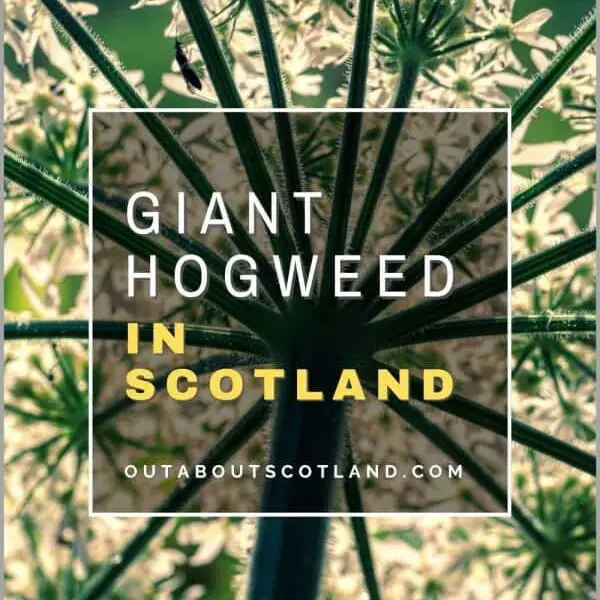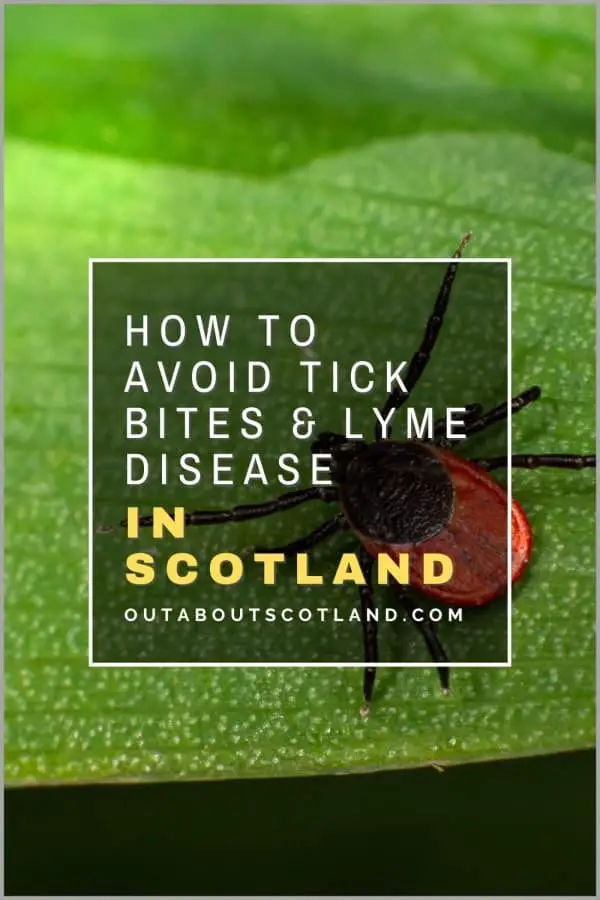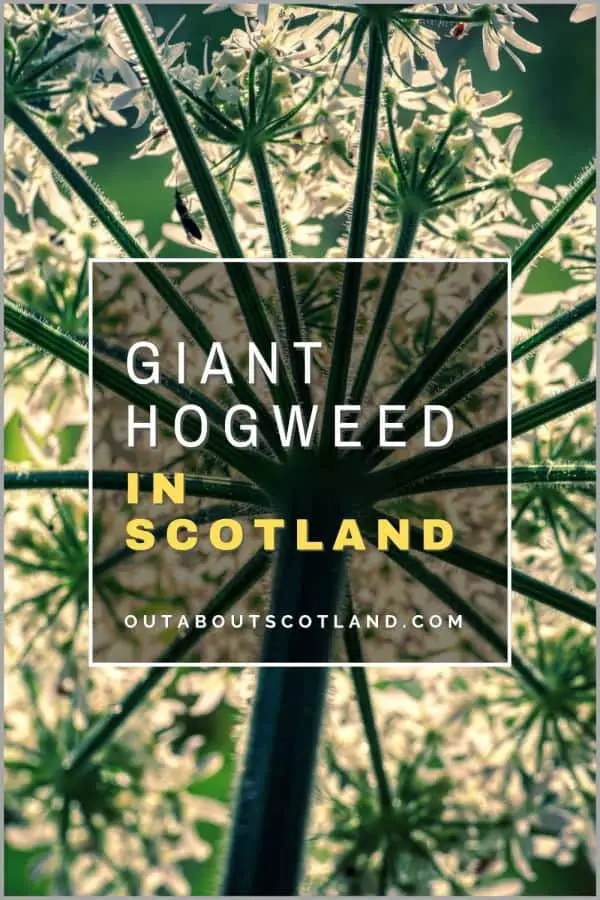Giant hogweed is an unmistakable plant that grows across much of Scotland but is primarily found in the south of the country. This invasive weed originated in southern Russia and was first introduced to Britain in the early 1800s as an ornamental plant, but it quickly spread into the countryside and is now classified as Britain’s most dangerous plant.
Although giant hogweed has attractive white flowers, the sap produced by the stems is extremely poisonous and it can cause blisters when contact is made with bare skin. Discover everything you need to know about this intrusive plant with this complete guide to giant hogweed in Scotland.
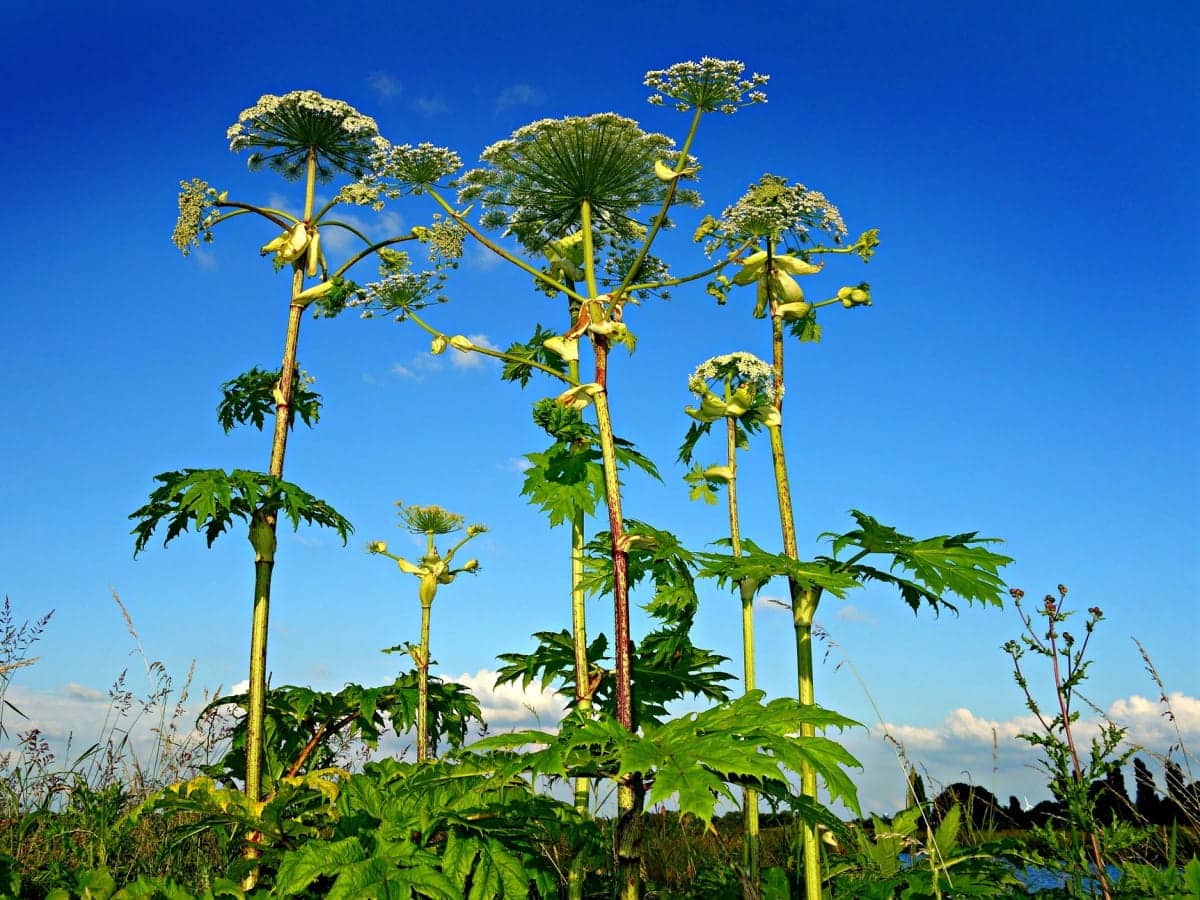
What Does Giant Hogweed Look Like?
Pretty much anyone in Europe will have seen giant hogweed at some point as this fast-growing non-native plant has spread like wildfire across much of the continent.
This invasive nonnative species appears very similar to native cow parsley, and in fact young plants are almost indistinguishable, but giant hogweed grows much taller than its cousin and some plants have been measured at an astonishing 16 feet (5 metres) in height. When fully grown, giant hogweed (Heracleum Mantegazzianum) is easily identified by its thick stems which are covered in spiky bristles and have large purple blotches.
In its first year, the plant produces large jagged green leaves that are often 1 metre in size, though there are no flowers on young plants. These appear anywhere from 2-4 years when the plant grows a flower spike with a distinctive head that’s up to 80 cm across.
The flowers on giant hogweed stems are small, white, and very similar to the flowers on cow parsley with an umbrella-shaped head that faces upwards. Once the flowers die off the seeds are revealed which number between 50,000 to 80,000 on the largest plants.
One peculiarity of giant hogweed is that its stem is partially hollow, leading to children cutting it down to use as pea shooters. Sadly, this often leads to severe burning of the lips and mouth, hence parents need to teach their children the dangers of playing with the plant.
If you have spotted giant hogweed in Scotland you can make a report to the Scottish Invasive Species Initiative.
Does Giant Hogweed Grow in Scotland?
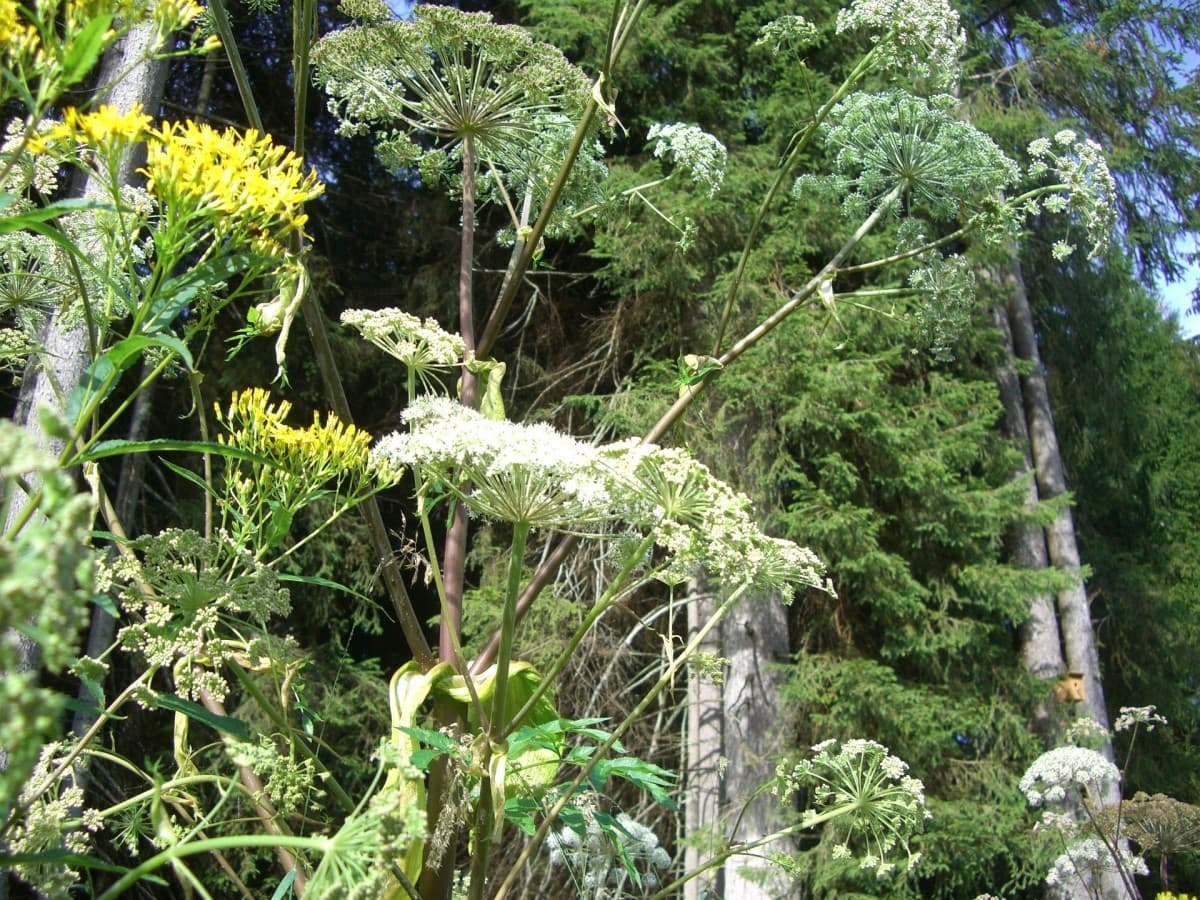
Even though it isn’t native there are many places where you’ll find giant hogweed in Scotland. The plant primarily grows from the Borders to Central Scotland but it also thrives along the eastern region and from Aberdeenshire to Inverness.
Like most weeds, it’s very hardy and thrives near rivers but it’s also prevalent on wasteland and rough pastures, particularly in damp meadows and near woodland. Sadly, this means that most of Lowland Scotland presents prime growing conditions for giant hogweed and it has now become so successful that some riverbanks are completely covered which is driving out our native plant species.
Rather scarily, the plant is now becoming more and more common in cities and you can even find giant hogweed in Edinburgh and Glasgow, though mainly near canals and in parks.
The good news is that it has failed to take much of a foothold in the Scottish Highlands and it’s rare to see it either on the west coast, the North Highlands, or any of Scotland’s islands. Also, while the sap can cause blistering on some animals, sheep appear to be unfazed by it and they successfully graze on the shoots which helps to reduce its spread.
If you’d like to know more about the places where giant hogweed grows I recommend visiting the WhatShed website which has a constantly updated map of locations along with a report form so you can include new sightings as they appear.
Is Giant Hogweed Dangerous?
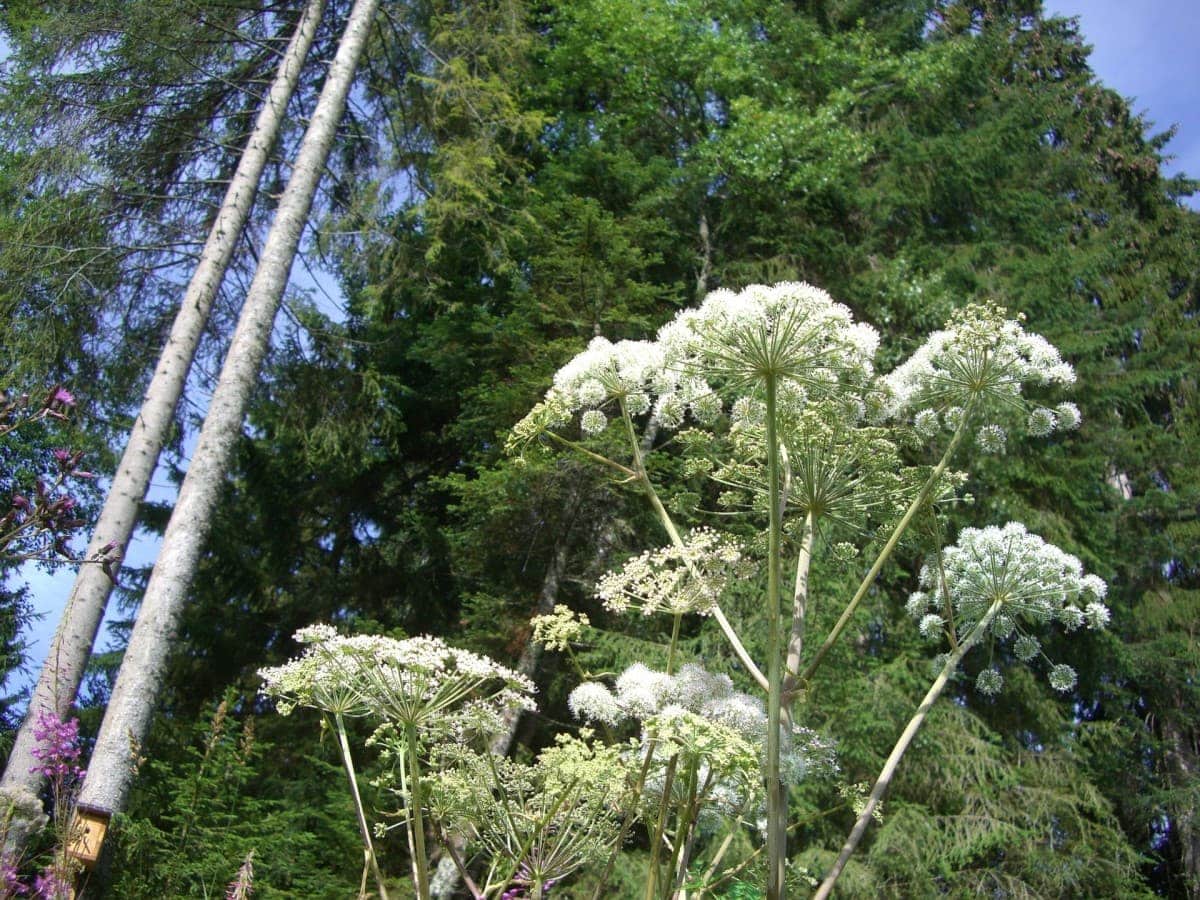
Giant hogweed is very dangerous and care must be taken by people as well as pets in areas where the plant grows. The sap that the stem and leaf stalks secrete when touched is what puts people in danger. Even brushing against the plant is enough to release the sap which is why great care must be taken when trying to remove it.
The sap contains a chemical called furanocoumarin which causes the skin to become very sensitive to sunlight. This photosensitivity is so extreme that it can cause blistering and almost all people (especially children) will have a skin reaction within 48 hours.
Giant Hogweed Burns
The blisters caused by giant hogweed sap occur when the skin layers separate, causing the body to fill the gap between the layers of the raw epidermis with a sterile protective fluid called serum. If the blisters pop the fluid leaks out and the exposed skin can become infected as well as being very painful.
Around 5 days after the blisters appear the damaged skin will begin to change colour and will continue to remain sensitive to sunlight for many months after, and sometimes for years. In some individuals the areas of skin that were exposed to giant hogweed sap will develop phytophotodermatitis which is a condition where the skin will flare up at any time it’s exposed to sunlight. There is currently no known cure for this skin ailment.
If you do come into contact with giant hogweed sap the recommended advice is to thoroughly wash the affected area with soap and water and cover it to prevent exposure to sunlight. Topical steroids such as hydrocortisone cream will help to ease the pain of irritated skin but if the symptoms get worse it’s important to speak to a medical professional.
If the sap comes into contact with your eyes you must flush them for a full 15 minutes and then seek medical advice.
How to Tell Giant Hogweed Apart From Similar Plants?
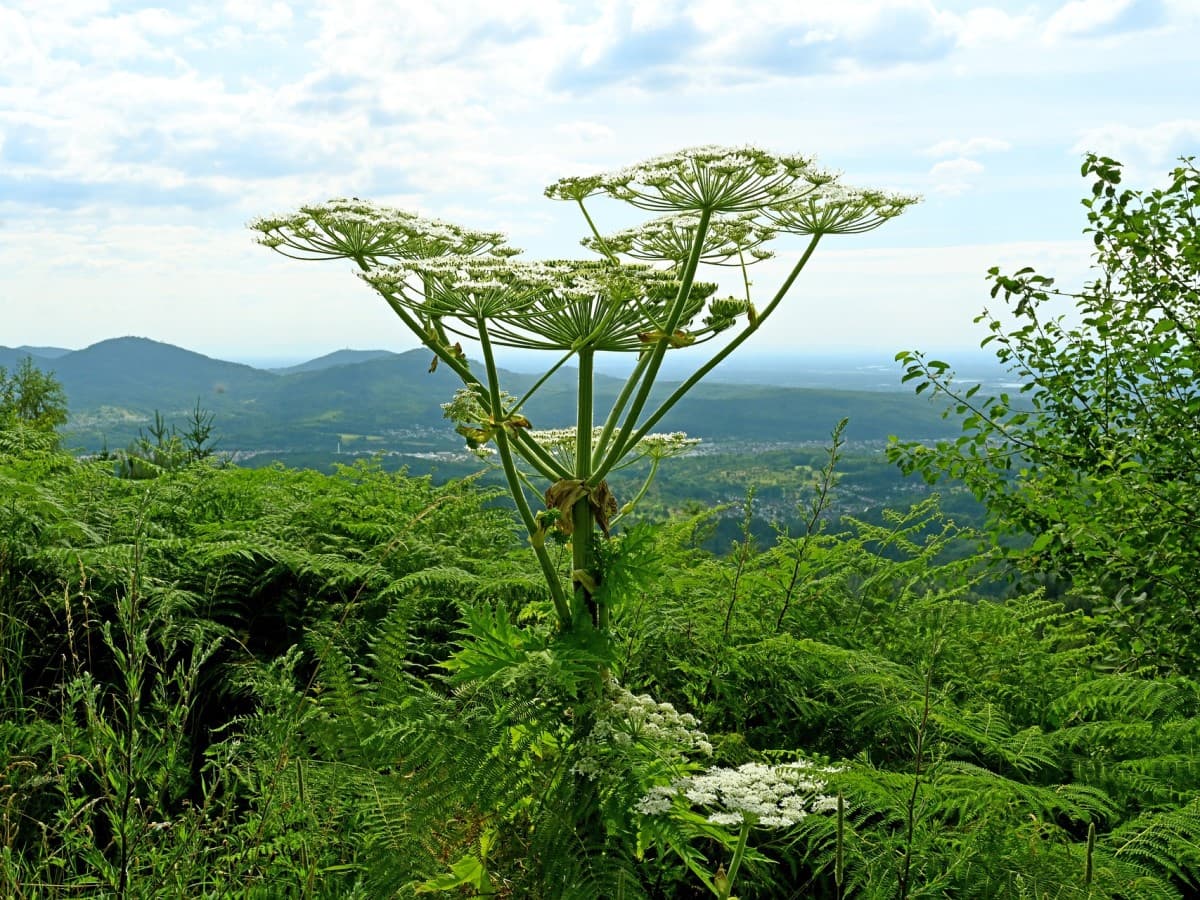
Giant hogweed is most similar to cow parsley and when young, both plants can be mistaken for each other. However, cow parsley is not poisonous and it does not produce a dangerous sap. Cow parsley is native to Scotland and is usually found in hedgerows and along the sides of roads. Once fully grown it stands approximately 60-170cm tall and has a large head with small white flowers that are similar to giant hogweed flowers in appearance, though much smaller.
The easiest way to differentiate the two plants is to look at the leaves. Cow parsley leaves have small divisions within them that are further subdivided with serrated edges. Giant hogweed, meanwhile, has single leaves that are huge – up to 3 metres wide on some specimens – and look similar to wild rhubarb leaves. The leaves are also hairy on the underside.
Giant Hogweed vs Hogweed
Another plant that is often mistaken for giant hogweed is common hogweed (Heracleum Sphondylium). Though very similar in appearance it’s much smaller and has leaf stems that gradually change colour from green to purple whereas giant hogweed stems are green with purple blotches.
Although common hogweed can grow quite tall it rarely manages a height of more than 2 metres and the flower heads grow to a maximum of 20 cm across – 1/3 that of giant hogweed flowers. Another identifying characteristic of common hogweed is the shape of the leaves which are more rounded and do not have sharp jagged edges.
How to Dispose of Giant Hogweed
Giant hogweed is a hardy plant and therefore can be difficult to control, similar to but not quite as prolific as the dreaded Japanese knotweed.
Before attempting to remove this weed you must cover all exposed skin with clothing and – most importantly – wear gardening gloves and eye protection. The latter is highly important as there have been cases of blindness caused by people getting giant hogweed sap in their eyes when cutting down the plant.
Regarding cutting down fully-grown plants, the stems must be cut at least 15cm below ground level as cutting at ground level or above will only encourage them to grow back stronger than ever. To prevent the seeds from spreading, the flowering head should be covered with a sack, cut off, and then burnt.
Giant Hogweed Treatments
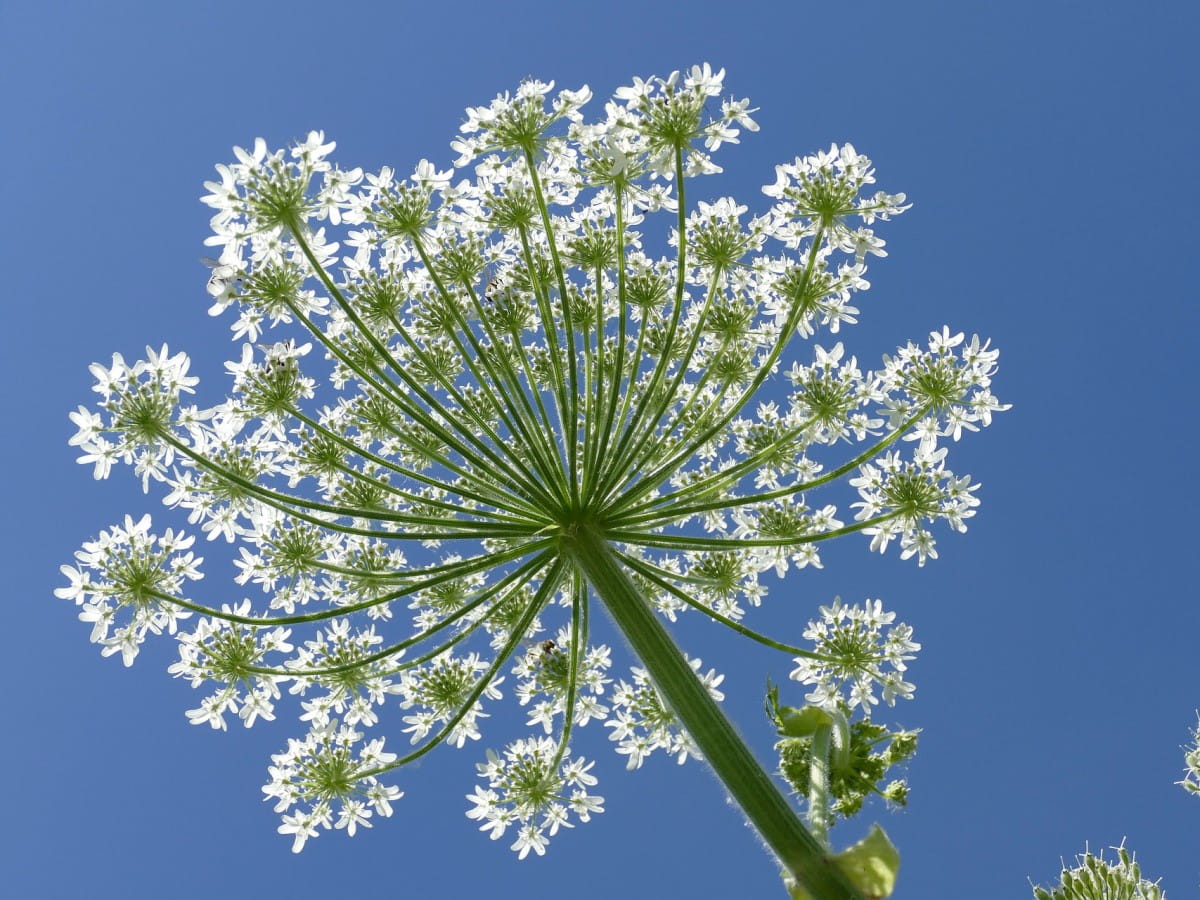
If you’re happy to use chemicals to kill these plants then systemic weedkillers based on glyphosate are best as they will seep into the stem and kill the roots which prevents any further regrowth. However, these chemicals must not be used anywhere there’s a possibility they can enter the water supply.
Once the plant is cut down it must be carefully destroyed as it’s classified as controlled waste. That means it can only be taken to licensed landfill sites or composted down. Burning is also possible but be aware the fleshy stems contain lots of water and are difficult to set alight.
Finally, the ground where the giant hogweed grew must be dug back and as much of the root removed as possible. Planting native plants in its place will help to stop the giant hogweed from taking hold again if the roots are not adequately removed.
For more information about Giant Hogweed, take a look at the Woodland Trust website.
Giant Hogweed Seeds
While some people cultivate common hogweed for its edible seeds, this is not the case with giant hogweed. Other than its original use as an ornamental plant, this intrusive species has no use whatsoever, which is made all the worse by the fact that it develops thousands of seeds on each flower head.
Giant hogweed blooms between June and July after which the whole plant dies back leaving behind a tough woody shell and thousands of seeds which fall to the ground and become mixed in with the top layer of soil. Some of these seeds germinate and develop a taproot after which they emerge above ground level from January to June. The plant is fast growing and will produce leaves that are 1 metre in size by its first year.
To stop the spread of the seeds, it’s recommended to remove the flower heads once they appear by lopping them off with long-handled shears and then destroying them by fire.
Frequently Asked Questions
What happens if you touch giant hogweed?
When giant hogweed is touched or brushed against it produces a sap which contains the chemical furanocoumarin.
When bare skin is brought into contact with this chemical it becomes extremely photosensitive to the point where sunlight will cause the affected area to develop large and painful blisters.
Is giant hogweed poisonous to humans?
Giant hogweed is one of a group of plants in the Heracleum genus. These plants do not have any known beneficial properties and are known to be poisonous to humans due to the chemical furanocoumarin that they excrete in their sap.
This sap is so harmful that it is recommended that people completely avoid the plants wherever possible and only attempt to remove them when fully covered in protective gear.
Can giant hogweed grow in your garden?
Giant hogweed can grow in household gardens and it likely will do if there are other plants in the immediate area. Each flower head may contain 5,000 seeds and these seeds can produce plants up to 15 years after they are shed into the soil.
By law, the owner of land which has giant hogweed on it is responsible for managing it and landowners are expected to take reasonable steps to either remove it or prevent its spread.
It is an offence to cause giant hogweed to grow in the wild.
Where does giant hogweed come from?
Giant hogweed is not native to Scotland. This invasive plant species was brought to the UK in the early 1800s as an ornamental plant, most likely from southern Russia and Georgia though possibly from Central Asia.
The plant lives in most European countries and is abundant in North America.

